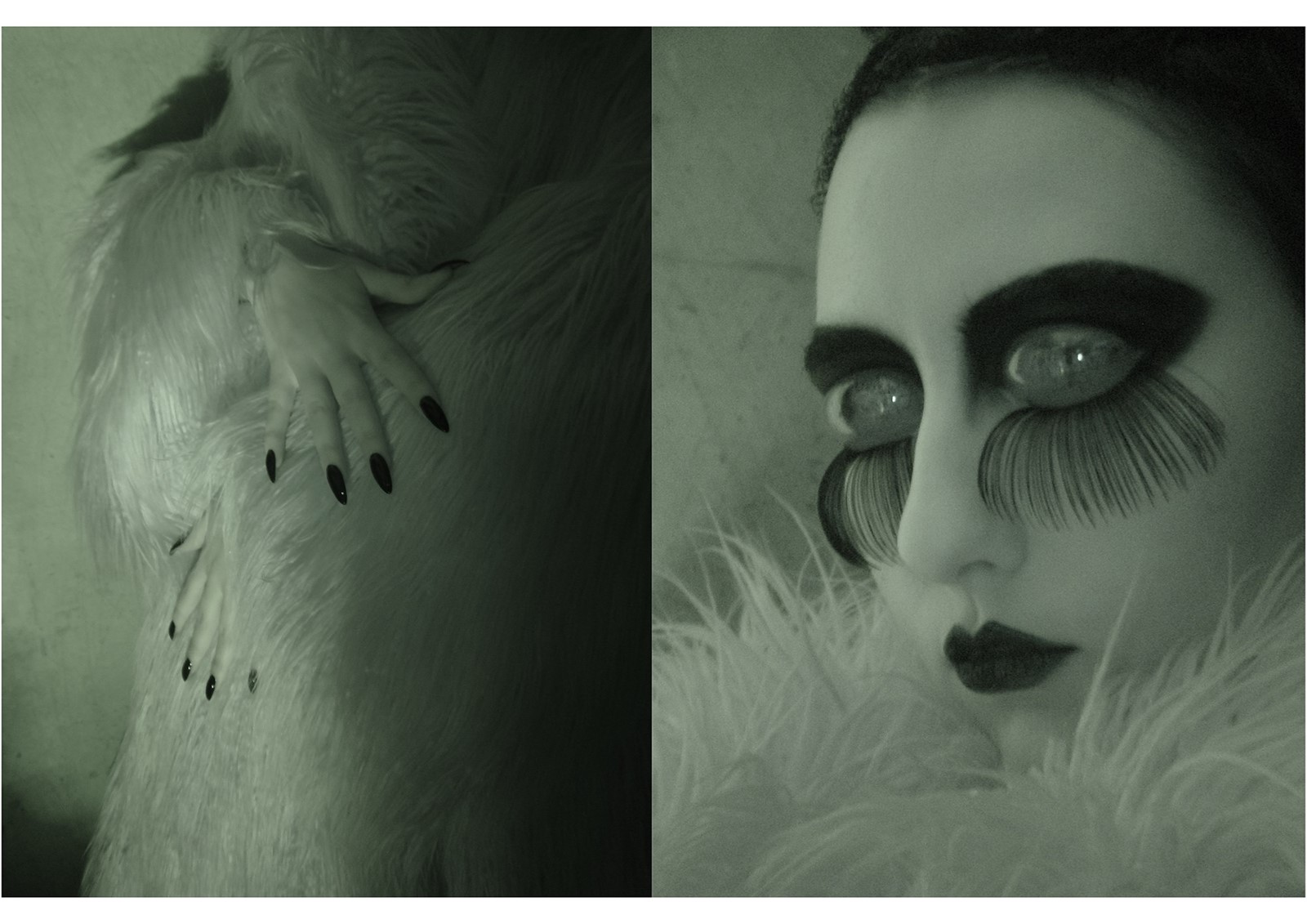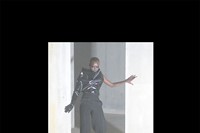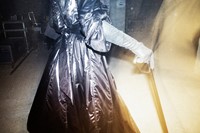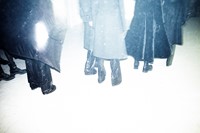On first instinct, there are few ways less appealing to spend a Saturday night than deep within a cement bunker listening to the soundtrack of “relentless looping and lacerating jump cuts […] based on CIA sleep deprivation techniques”. But, for Gareth Pugh – a designer who has built his name upon austere aesthetics and underground subversion – it appeared a natural setting. For his Autumn/Winter 2017 show, Pugh dismissed the brief burst of optimism we saw last season and instead chose to explicitly reflect “a vision of a world on the precipice of anarchy” through a mercilessly monolithic series of sharply tailored suiting and darkly billowing capes. There were allusions aplenty to the cinematic tropes of fascism – notably Cabaret and The Night Porter, each of which was explicitly referenced here – but most importantly, it was a collection that showed what Pugh does best: transforming women into powerfully attractive figures of “lethal female resistance”.
An Ominous Climate
This season’s collections have been conceived during particularly troubling times: there have been the stagnating repercussions of Brexit, which have done little to assuage anxieties on either side of the debate, and, of course, the election of Donald Trump. “It feels a little bit strange to present something like this during London Fashion Week,” said Pugh, “but these decisions affect everybody – and the fashion industry is full of minorities: women, gay men, immigrants. How do you respond to the things around you? You use the tools that you’ve got – and I guess that these are ours.”
Pugh is right: to willfully ignore the climate he is working in would be bizarre – and politics have had a visible presence throughout fashion of late. But he is fully aware of how trite such proclamations can feel, explaining that “I guess the simple answer to the idea that we might be [using politics as a marketing tool] is that, as a brand, we’re not commercially driven; this isn’t staged to push product”. Pugh’s raison d’être has never been, first and foremost, to sell clothes (although, beneath the theatrics, this season appeared particularly covetable); it has been to immerse his audience within a world of his own making. “It’s the way I communicate to a wider audience,” he says. “We can’t forget what this all means in real terms, and I think it’s important to be part of that conversation.”
“How do you respond to the things around you? You use the tools that you’ve got – and I guess that these are ours” Gareth Pugh
So, there were the emphatic nods to cinema – to the “smoke and mirrors and fakery” that has recently seeped through the silver screen – presented alongside an insistent command to stay woke nonetheless. “We opened the show with a lullaby from Mary Poppins; we wanted to lull the audience into a false sense of security and then hit them hard,” he explained. And he did: Julie Andrews’ voice broke into a mix of Gimme Shelter spliced against Madonna; Donald Trump rallies mixed with Jimi Hendrix. It was unsettling, and uncomfortable, and anxiety-inducing to say the least – and, when teamed with a series of severe silhouettes, it had a particularly hard-hitting impact.
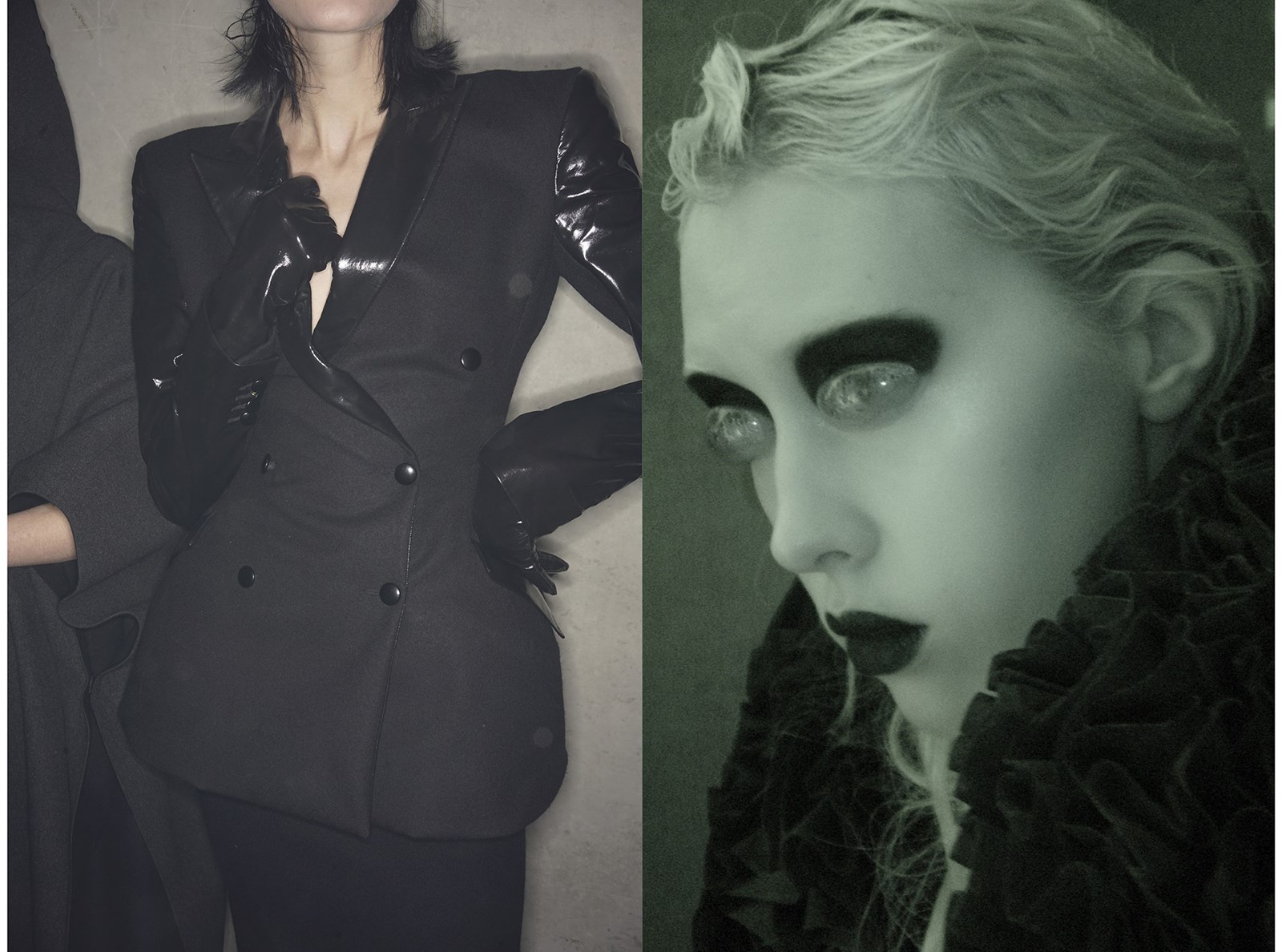
The Powers That Be
Pugh’s clothes do much to exaggerate the female body – and here, when it wasn’t shrouded in fake fur (some of which felt determinedly Shanghai Express), it was emphasised by narrowly nipped waists and padded hips in a take on tyrannical 40s glamour. For those who didn’t get the reference, armbands were attached to suit jackets – after all, “there’s no subtlety this season – but I don’t think there’s time for subtlety in the situation we’re in,” Pugh remarked. Women wore plastic-moulded corsetry that emulated the form of riot shields; coats made from army blankets; cages made from nylon seatbelts in a dystopian homage to the savage powers that be: they came lethally equipped, terrifying jailers with clusters of metal keys clutched in their hands. “I think it’s true to say that you can subvert an idea to the point it becomes abstract: that you don’t really get the visual impact and it gets lost. We’re trying to be quite direct in certain parts.”
“There’s no subtlety this season – but I don’t think there’s time for subtlety in the situation we’re in” Gareth Pugh
For A/W17, the apocalyptic state of the world, of its suffocating and toxic masculinity, and its violent repercussions, were reflected through pieces that paid tribute to its executors, each woman made bug-eyed and willfully blind through opaque plastic lenses lined with spidery lashes. “The cultural pendulum has swung to the right,” Pugh said in his show notes. “Do you look it in the eye, or do you look away? That’s the critical question. It defines who you are.” “It’s the idea of holding a mirror up to the world,” he continued – and such a collection might have channelled all of the finesse in form and fabrication that he is so renowned for, but it was equally a forceful call to action.
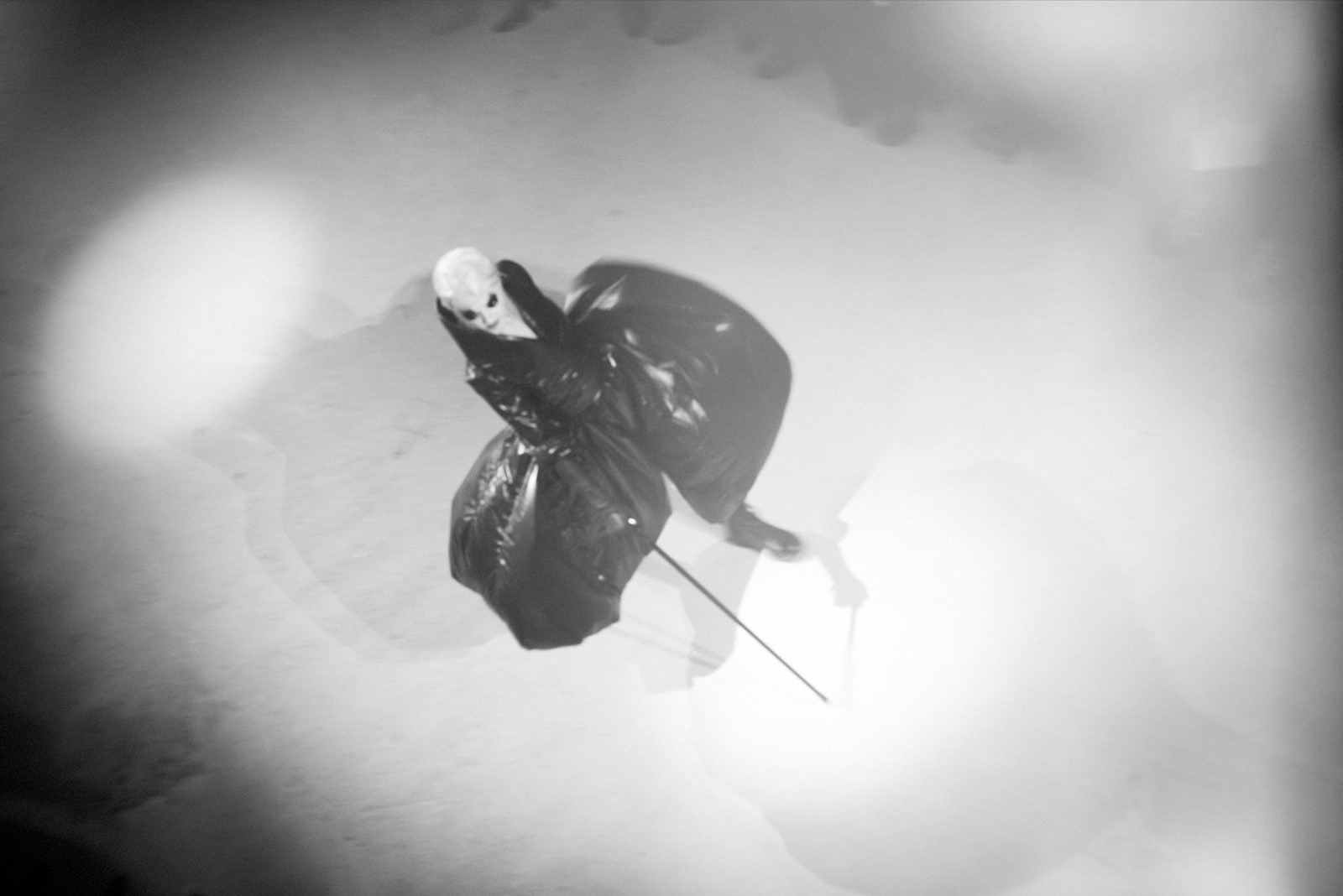
Strength in Numbers
Pugh is a designer who surrounds himself with, and consistently celebrates, strong women. This time, in lieu of a procession of models wearing his clothes, it was “a cross-generation of women who are a part of a life, but sort of intimidate us as well. I hate that idea of ‘street-casting’ because it’s not that, we aren’t populating the show with people who look interesting, what we have done is put together a list of people who we really like and who mean a lot to us and are a part of our history.” So, on the runway appeared artist and activists Adrina Drina and Elliott Bennett Coon (who Pugh first met at CSM and who flew in from Mexico); performance artist Stav B (who used to work at a bar down the road from the squat he once lived in, and helped knit fabrics for some of his first collections); countercultural icon Scarlett Cannon (“she comes from that generation where it’s second nature to do things that feel right rather than worrying about alienating a commercial audience”); dominatrix and publisher Reba Maybury; anti-fascist performer Rodent Decay; model Erin O’Connor.
“We don’t want the show to be a soft-gloved hand. It’s more of a clenched fist” Gareth Pugh
Instead of appearing a homogenised army, these women (and the occasional man) were a collective – and it is that sense of authentic creative collectivity that has always set Pugh apart from the crowd. Rather than simply sinking into the depths of despair, what such a cast indicated was that, through mobilising together, all might not be lost. During a time when the world is fragmented, when allies appear disparate, where resistance so often seems painfully futile, the power of group action was being explicitly celebrated: the banding together of “activists, artists and outliers... circling, gathering force, beneath the streets of London”. “We don’t want the show to be a soft-gloved hand,” Pugh said. “It’s more of a clenched fist.” Stay woke, he said. Stay present. Stay together. During these times, such a sincere message has never appeared more relevant.
For our A/W17 fashion week coverage, anothermag.com is collaborating with Gasoline, a photography collective working with visual artists around the world. Here, photographers Eddie the Wheel and Rosie Marks present a look at Gareth Pugh A/W17.
